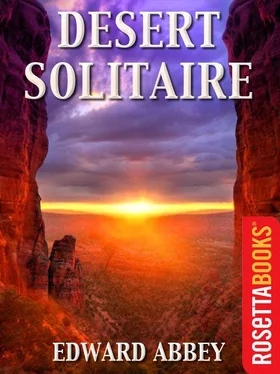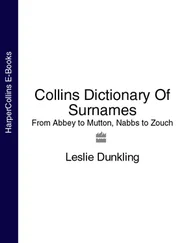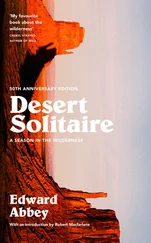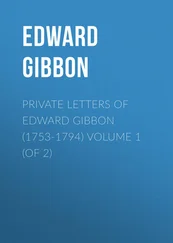Abbey, Edward - Desert Solitaire (Edward Abbey Series )
Здесь есть возможность читать онлайн «Abbey, Edward - Desert Solitaire (Edward Abbey Series )» — ознакомительный отрывок электронной книги совершенно бесплатно, а после прочтения отрывка купить полную версию. В некоторых случаях можно слушать аудио, скачать через торрент в формате fb2 и присутствует краткое содержание. Год выпуска: 2011, Издательство: RosettaBooks, Жанр: Старинная литература, на английском языке. Описание произведения, (предисловие) а так же отзывы посетителей доступны на портале библиотеки ЛибКат.
- Название:Desert Solitaire (Edward Abbey Series )
- Автор:
- Издательство:RosettaBooks
- Жанр:
- Год:2011
- ISBN:нет данных
- Рейтинг книги:4 / 5. Голосов: 1
-
Избранное:Добавить в избранное
- Отзывы:
-
Ваша оценка:
- 80
- 1
- 2
- 3
- 4
- 5
Desert Solitaire (Edward Abbey Series ): краткое содержание, описание и аннотация
Предлагаем к чтению аннотацию, описание, краткое содержание или предисловие (зависит от того, что написал сам автор книги «Desert Solitaire (Edward Abbey Series )»). Если вы не нашли необходимую информацию о книге — напишите в комментариях, мы постараемся отыскать её.
Desert Solitaire (Edward Abbey Series ) — читать онлайн ознакомительный отрывок
Ниже представлен текст книги, разбитый по страницам. Система сохранения места последней прочитанной страницы, позволяет с удобством читать онлайн бесплатно книгу «Desert Solitaire (Edward Abbey Series )», без необходимости каждый раз заново искать на чём Вы остановились. Поставьте закладку, и сможете в любой момент перейти на страницу, на которой закончили чтение.
Интервал:
Закладка:
Time to inspect the garden. I refer to the garden which lies all around me, extending from here to the mountains, from here to the Book Cliffs, from here to Robbers’ Roost and Land’s End—an area about the size of the Negev and, excepting me and the huddled Moabites, uninhabited.
Inventory. Great big yellow mule-ear sunflowers are blooming along the dirt road, where the drainage from the road provides an extra margin of water, a slight but significant difference. Growing among the sunflowers and scattered more thinly over the rest of the desert are the others: yellow borage, Indian paintbrush, scarlet penstemon, skyrocket gilia, prickly pear, hedgehog cactus, purple locoweed, the coral-red globemallow, dockweed, sand verbena. Loveliest of all, however, gay and sweet as a pretty girl, with a fragrance like that of orange blossoms, is the cliffrose, Cowania stansburiana , also known—by the anesthetic—as buckbrush or quinine bush.
The cliffrose is a sturdy shrub with gnarled trunk and twisting branches, growing sometimes to twice a man’s height. When not in bloom it might not catch your eye; but after the winter snows and a trace of rain in the spring it comes on suddenly and gloriously like a swan, like a maiden, and the shaggy limbs go out of sight behind dense clusters of flowers creamy white or pale yellow, like wild roses, each with its five perfect petals and a golden center.
There’s a cliffrose standing near the shed behind the trailer, shaking in the wind, a dazzling mass of blossoms, and another coming up out of solid sandstone beside the ramada, ten feet tall and clothed in a fire of flowers. If Housman were here he’d alter those lines to
Loveliest of shrubs the cliffrose now
Is hung with bloom along the bough…
The word “shrub” presents a challenge, at least to such verse as this; but poetry is nothing if not exact. The poets lie too much, said Jeffers. Exactly. We insist on precision around here, though it bend the poesy a little out of shape.
The cliffrose is practical as well as pretty. Concealed by the flowers at this time are the leaves, small, tough, wax-coated, bitter on the tongue—thus the name quinine bush—but popular just the same among the deer as browse when nothing better is available—buckbrush. The Indians too, a practical people, once used the bark of this plant for sandals, mats and rope, and the Hopi medicine man is said, even today, to mash and cook the leaves as an emetic for his patients.
Because of its clouds of flowers the cliffrose is the showiest plant in the canyon country, but the most beautiful individual flower, most people would agree, is that of the cacti: the prickly pear, the hedgehog, the fishhook. Merely opinion, of course. But the various cactus flowers have earned the distinction claimed for them on the basis of their large size, their delicacy, their brilliance, and their transcience—they bloom, many of them, for one day only in each year. Is that a fair criterion of beauty? I don’t know. For myself I hold no preference among flowers, so long as they are wild, free, spontaneous. (Bricks to all greenhouses! Black thumb and cutworm to the potted plant!)
The cactus flowers are all much alike, varying only in color within and among the different species. The prickly pear, for example, produces a flower that may be violet, saffron, or red. It is cup-shaped, filled with golden stamens that respond with sensitive, one might almost say sensual, tenderness to the entrance of a bee. This flower is indeed irresistibly attractive to insects; I have yet to look into one and not find a honeybee or bumblebee wallowing drunkenly inside, powdered with pollen, glutting itself on what must be a marvelous nectar. You can’t get them out of there—they won’t go home. I’ve done my best to annoy them, poking and prodding with a stem of grass, but a bee in a cactus bloom will not be provoked; it stays until the flower wilts. Until closing time.
The true distinction of these flowers, I feel, is found in the contrast between the blossom and the plant which produces it. The cactus of the high desert is a small, grubby, obscure and humble vegetable associated with cattle dung and overgrazing, interesting only when you tangle with it in the wrong way. Yet from this nest of thorns, this snare of hooks and fiery spines, is born once each year a splendid flower. It is unpluckable and except to an insect almost unapproachable, yet soft, lovely, sweet, desirable, exemplifying better than the rose among thorns the unity of opposites.
Stepping carefully around the straggling prickly pear I come after a few paces over bare sandstone to a plant whose defensive weaponry makes the cactus seem relatively benign. This one is formed of a cluster of bayonetlike leaves pointing up and outward, each stiff green blade tipped with a point as intense and penetrating as a needle. Out of the core of this untouchable dagger’s-nest rises a slender stalk, waist-high, gracefully curved, which supports a heavy cluster of bell-shaped, cream-colored, wax-coated, exquisitely perfumed flowers. This plant, not a cactus but a member of the lily family, is a type of yucca called Spanish bayonet.
Despite its fierce defenses, or perhaps because of them, the yucca is as beautiful as it is strange, perfect in its place wherever that place may be—on the Dagger Flats of Big Bend, the high grasslands of southern New Mexico, the rim and interior of Grand Canyon or here in the Arches country, growing wide-spaced and solitaire from the red sands of Utah.
The yucca is bizarre not only in appearance but in its mode of reproduction. The flowers are pollinated not by bees or hummingbirds but exclusively by a moth of the genus Pronuba with which the yucca, aided by a liberal allowance of time, has worked out a symbiotic relationship beneficial and necessary to both. The moth lays its eggs at the proper time in the ovary of the yucca flower where the larvae, as they develop, feed on the growing seeds, eating enough of them to reach maturity but leaving enough in the pod to allow the plant, assisted by the desert winds, to sow next year’s yucca crop. In return for this nursery care the moth performs an essential service for the yucca: in the process of entering the flower the moth—almost accidentally it might seem to us—transfers the flower’s pollen from anther to pistil, thus accomplishing pollination. No more; but it is sufficient.
The wind will not stop. Gusts of sand swirl before me, stinging my face. But there is still too much to see and marvel at, the world very much alive in the bright light and wind, exultant with the fever of spring, the delight of morning. Strolling on, it seems to me that the strangeness and wonder of existence are emphasized here, in the desert, by the comparative sparsity of the flora and fauna: life not crowded upon life as in other places but scattered abroad in spareness and simplicity, with a generous gift of space for each herb and bush and tree, each stem of grass, so that the living organism stands out bold and brave and vivid against the lifeless sand and barren rock. The extreme clarity of the desert light is equaled by the extreme individuation of desert life-forms. Love flowers best in openness and freedom.
Patterns in the sand, tracks of tiger lizards, birds, kangaroo rats, beetles. Circles and semicircles on the red dune where the wind whips the compliant stems of the wild ricegrass back and forth, halfway around and back again. On the crest of the dune is a curving cornice from which flies a constant spray of fine sand. Crescent-shaped, the dune shelters on its leeward side a growth of sunflowers and scarlet penstemon. I lie on my belly on the edge of the dune, back to the wind, and study the world of the flowers from ground level, as a snake might see it. From below the flowers of the penstemon look like flying pennants; the sunflowers shake and creak from thick green hairy stalks that look, from a snake’s viewpoint, like the trunks of trees.
Читать дальшеИнтервал:
Закладка:
Похожие книги на «Desert Solitaire (Edward Abbey Series )»
Представляем Вашему вниманию похожие книги на «Desert Solitaire (Edward Abbey Series )» списком для выбора. Мы отобрали схожую по названию и смыслу литературу в надежде предоставить читателям больше вариантов отыскать новые, интересные, ещё непрочитанные произведения.
Обсуждение, отзывы о книге «Desert Solitaire (Edward Abbey Series )» и просто собственные мнения читателей. Оставьте ваши комментарии, напишите, что Вы думаете о произведении, его смысле или главных героях. Укажите что конкретно понравилось, а что нет, и почему Вы так считаете.












